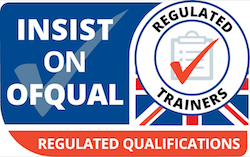Defibrillators, particularly automated electronic defibrillators (AEDs), are becoming more and more common in our communities due to their life-saving potential during heart emergencies. Let’s delve into what they are, their importance, availability and clear up any myths and common questions.
What are Defibrillators?
Defibrillators are medical devices that deliver an electric shock to the heart to restore its normal rhythm. This is crucial during a cardiac arrest, a situation where the heart suddenly stops beating. The shock can help stop the heart from irregular contractions and reset it back to its normal function.
Among defibrillators, there is a specific type known as an Automated External Defibrillator (AED). An AED is a portable device that checks the heart rhythm and can send an electric shock to the heart to restore a normal rhythm. AEDs are used to treat sudden cardiac arrest, a condition in which the heart suddenly and unexpectedly stops beating.
The key difference between an AED and other defibrillators is that the AED is automated, meaning it can automatically diagnose the life-threatening cardiac arrhythmias of ventricular fibrillation and pulseless ventricular tachycardia, and is able to treat them through defibrillation. This automation allows people without medical training to potentially save a life by using the device, as the AED guides the user through the process with visual and voice prompts.
Why are they important?
Cardiac arrests can happen to anyone, regardless of their health or fitness levels. The immediate availability of AEDs and medical professionals can make a significant difference in such situations. According to a study by the National Health Service (NHS) England, the survival rate for out-of-hospital cardiac arrests can be significantly improved with immediate intervention. The study found that if an Automated External Defibrillator (AED) is used within 3-5 minutes of the cardiac arrest, along with CPR, the person’s chance of survival can be as high as 50% to 70%. Without such immediate intervention, the survival rate drops to just 7% to 8%.
How Available are Defibrillators?
The UK has seen a significant rise in the availability of defibrillators, particularly in major urban areas. London is leading this initiative, with Birmingham and Manchester not far behind.However, it’s crucial to highlight that there exists a considerable disparity in the distribution of these life-saving devices, with rural areas and the northern regions of England being less equipped.
To bridge this gap, resources like the National Defibrillator Database have been made available. This user-friendly platform allows individuals to locate their nearest accessible defibrillator. However, it’s equally important that all defibrillators, especially those onsite, are registered on these databases. Many existing devices are not currently registered, making them less accessible in times of emergency. You can register your device at The Circuit.
In a perfect world it should ideally be accessible within 90 seconds. This is because the chance of survival decreases by 7-10% for every minute that passes without defibrillation. If you need to find a local device and then go to retrieve it this could easily take several minutes. This is why the importance of having access to your own AED onsite cannot be overstated.
Are there Side Effects?
Defibrillator shocks, when administered correctly and only in cases of suspected cardiac arrest, are generally safe. There are no common side effects that one needs to be particularly wary of. However, it’s important to note that defibrillators should be used only under appropriate circumstances and, ideally, by a trained individual.
That being said, automated devices, such as the devices we provide at Onsite First Aid Training Company, are designed to be user-friendly and safe for untrained individuals. Automated defibrillators have the ability to detect when a shock is necessary as they can easily identify a cardiac arrest from, for example, a non-shockable event such as a heart attack. It can also guide an untrained person through the entire process.
While these devices are designed for ease of use, we still recommend receiving training also available with our AEDs or on its own. This not only maximises your ability to respond effectively in an emergency situation but also boosts your confidence when faced with such a high-stress scenario.

Wrapping Up
Defibrillators are a crucial tool in combating sudden cardiac arrests. Their increasing availability and the ongoing efforts to raise public awareness about their use are encouraging steps towards a safer society. However, training in the use of these devices and basic life support skills is equally important.
Remember, AED defibrillators are designed to be used by anyone, not just medical professionals. In a cardiac emergency, their use alongside effective CPR can and does save lives!
If you have any questions or are interested in discussing AED options and available training, don’t hesitate to contact us today!











